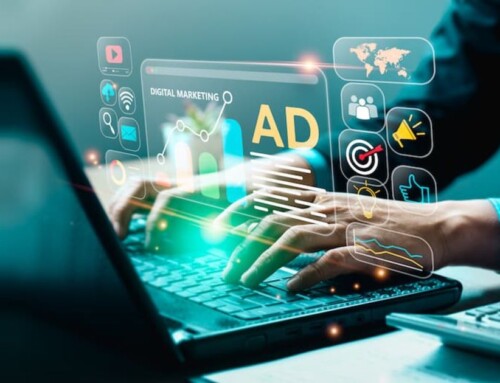Influencer marketing is poised for exponential expansion as it builds on the impressive advances made in recent years.
According to recent surveys, seventy percent 75% of US marketers working for organizations with 100 or more workers would utilize influencer marketing in 2022. These figures are increasing from 70% in 2021. It is predicted that US spending on influencer marketing would reach $4.14 billion this year, and $16.4 billion worldwide.
From TikTok and Instagram to Twitch and YouTube, influencer marketing on social media platforms are driving an evolution of the eCommerce market.
However, B2C businesses will not be the only ones responsible for influencer marketing growth. B2B are also seeing the sales potential of such collaborations. These companies are keen to establish social proof while also gaining access to fresh material and viewers. Indeed, this is causing a shift in emphasis toward influencer identification, recruitment, and engagement.
As organizations prioritize content development above audience reach, a larger portion of influencer marketing dollars will go to nano- and micro-influencers. While TikTok may have led the road for such opportunities, other social platforms have swiftly followed suit and expanded their creator tools to include smaller influencers.
Predictions for influencer marketing
Here are a few of the trends that will characterize influencer marketing in the coming year.
More advanced tools
50 million people regard themselves to be “creators” in 2020. This figure is only expected to rise in the aftermath of the epidemic, more people choosing to work-from-home, and the Great Resignation.
As more people identify as creators and attempt to monetize their audiences, the competition to clearly explain the value offered to prospective brand partners will intensify. As a result, social media companies will need to give stronger monetization and monitoring tools to authors. TikTok has previously shown how rapidly a new market entry may develop a dominating position.
End of Cookies
Third-party cookies have become synonymous with the current marketing environment. There’s been so much written about the cookie’s demise that there’s little use in revisiting it. Instead, explore how influencers might operate as a haven for digital marketing pros.
Influencers do not have audiences; instead, they have followers. Followers on social media aspire to the lifestyles of the people they follow. Most influencers are associated with a certain area, such as health & wellness, beauty, fashion, or sports. Influencers have already achieved what the business is talking about when it comes to “cohorts” as a replacement for cookies.
Feasting on digital content
Podcasts and short-form films have evolved as a sort of cure for the idea of time scarcity. Time poverty is not limited to job or domestic commitments; it also reflects an excess of media consumption alternatives.
Few of us have much time to consume media after juggling sleep, work, friends, and family. Technology was a constraint on the extent of human media intake in the preceding century. The internet profoundly altered that relationship, introducing a plethora of possibilities that generated the paradox of choice.
For the most part, audio and visual mediums are more compelling than text and will continue to gain market share in the future years.
Partnering with Influencers
Brands will seek closer collaboration with their influencers. Influencers are viewed as partners rather than contractors in these arrangements.
In the end, influencers know their fans better than brands do. This implies that marketing professionals can get useful information that can subsequently be used by a broader population.
Influencer marketing and affiliate marketing converge
As a result of the digital marketing revolution, the consumer journey has become extremely complicated. Before making a purchase, consumers will encounter and engage with hundreds of touchpoints.
Influencers provide a wave of introduction to a brand, product, or service, but empowering them to convert the customer assists companies in streamlining the sales funnel.
Every little bit helps in the long run. Thus, expect to see a stronger convergence of influencer and affiliate marketing efforts, which will not only result in increased conversion rates, but will also allow firms to more properly measure the worth of their marketing investment in the long run.
Good things come in small packages with nano and micro-influencers.
The growth of the nano and micro-influencer has already been attributed to this emphasis on evaluating value along the customer journey.
Because these influencers usually generate significantly higher levels of engagement than macro-influencers, they offer an enticing value proposition.
Many of the people who follow small-scale influencers do not consider themselves to be part of a homogenous group. As a result, they are able to build customer loyalty and brand recognition.
Influencer marketing within the affiliate space
Listed below are some of our most important advice for what to consider when considering influencer marketing in the affiliate arena.
Recognize the channels used by influencers.
Influencers rarely use a single social media site to communicate, instead relying on a variety of other platforms to supplement their efforts.
To determine how best to promote products and services, brands should carefully assess an influencer’s reach as well as their own marketing materials. On some channels, certain items, services, and even creative formats will perform better than on others.
Make your ties stronger
Influencers aren’t paid salespeople. Their fans are familiar with their identities and can tell whether they’re pushing or hawking a product. This will be reflected in the level of engagement.
Work with your influencer to figure out how to reach out to their audience in a genuine way. The goal of this game is to build trust.
Invest instead of hiring
Consider your influencers to be an investment in your business. Don’t rely solely on monetary compensation to motivate your employees; instead, maintain open lines of communication and provide possibilities for collaboration when the situation calls for it.
Consider making an investment in them – either financially or through training – to help them become better brand ambassadors.
Take a stand, but do it with caution
While millennials are the most socially conscious, they are also the most receptive to societal influences. The majority of millennials believe that the companies they shop from should share their values and ideals.
In light of this, brands must not only have a clear goal statement, but also be selective in who they collaborate with as influencers.
Seattle Advertising Inc., an award-winning, digital advertising agency based in Seattle. Contact us today to discuss your digital marketing and advertising needs.





